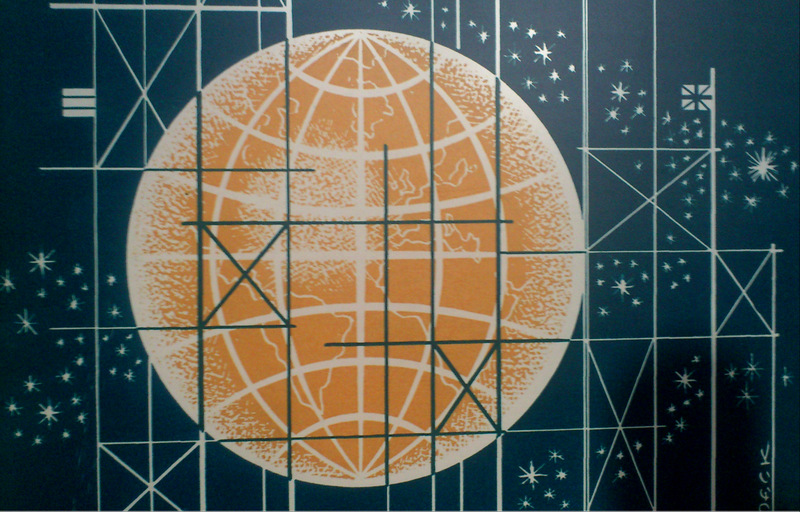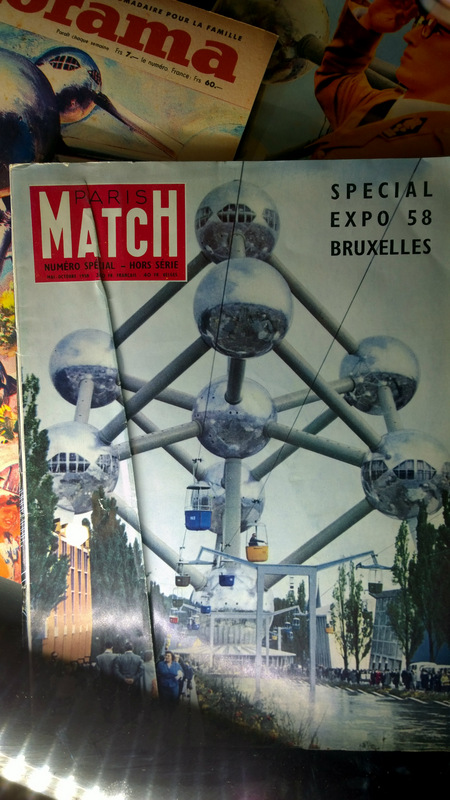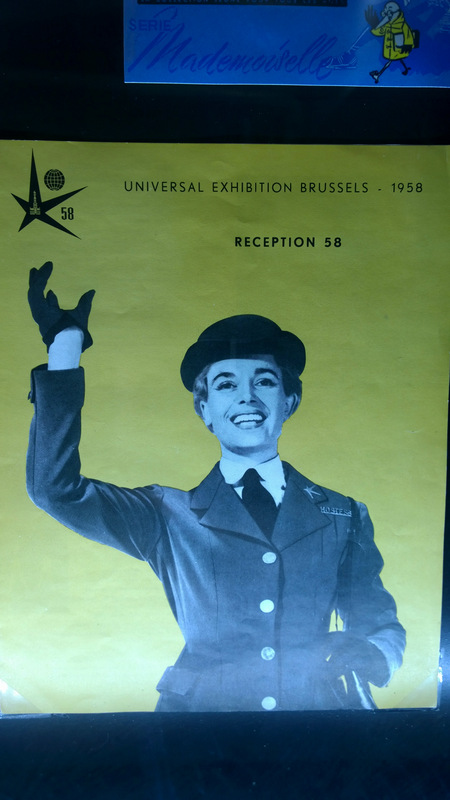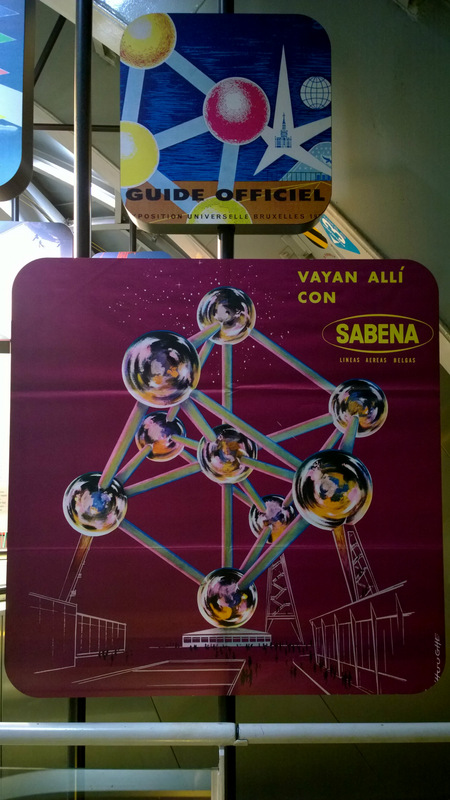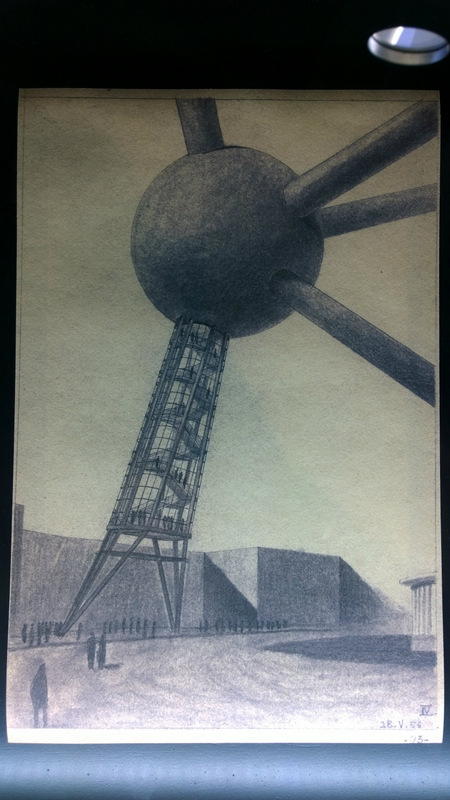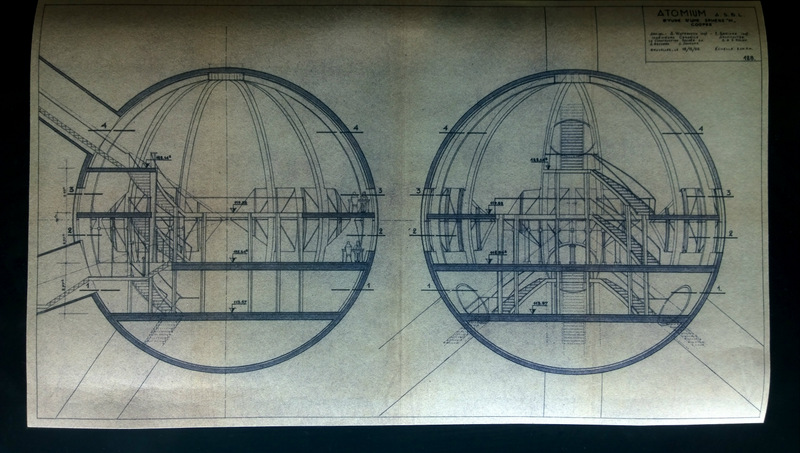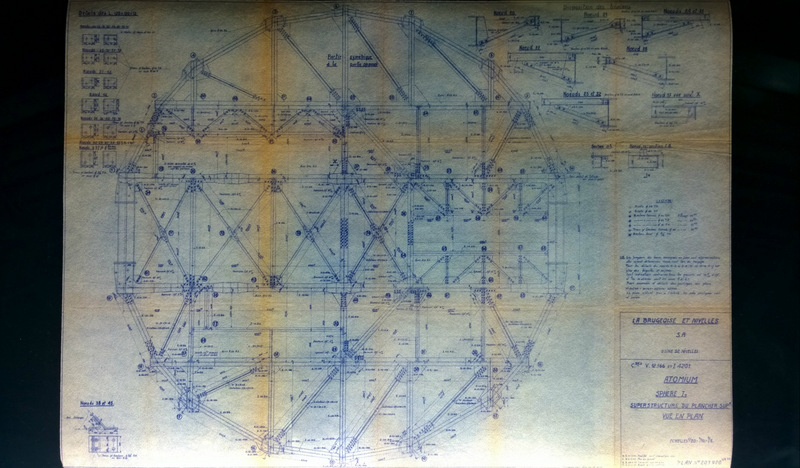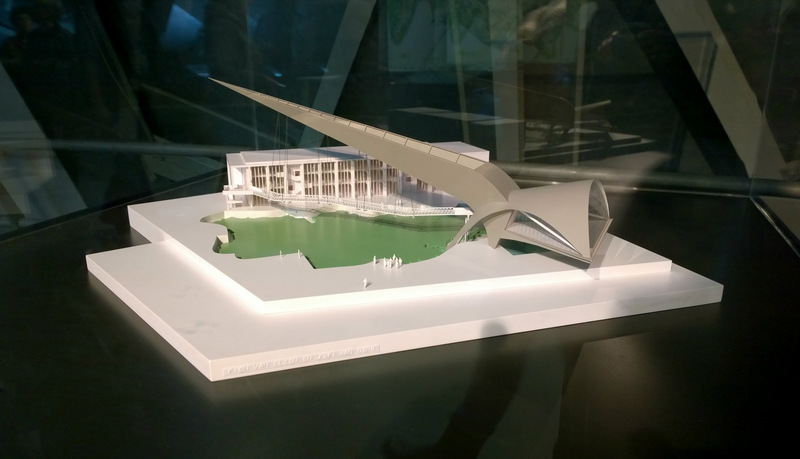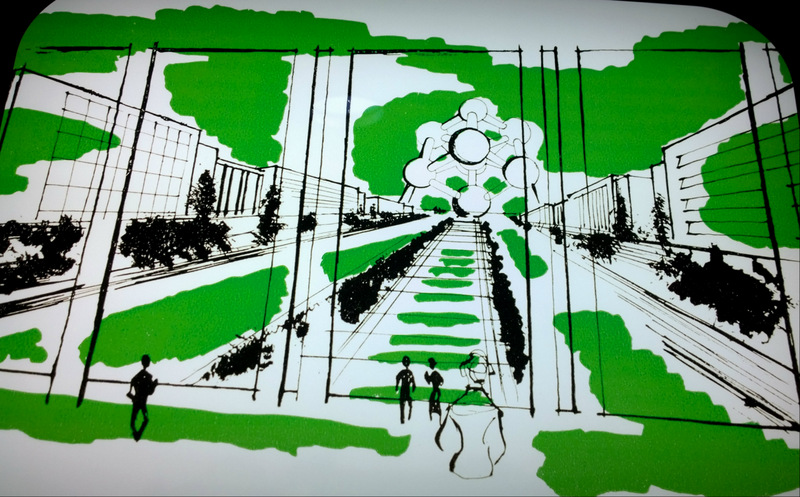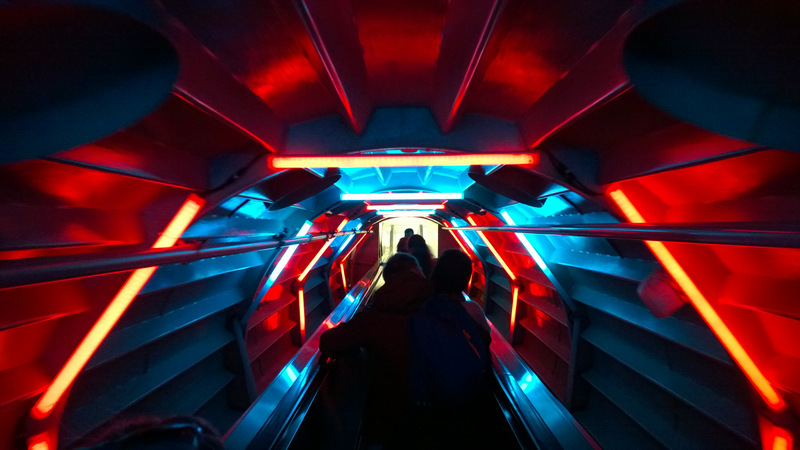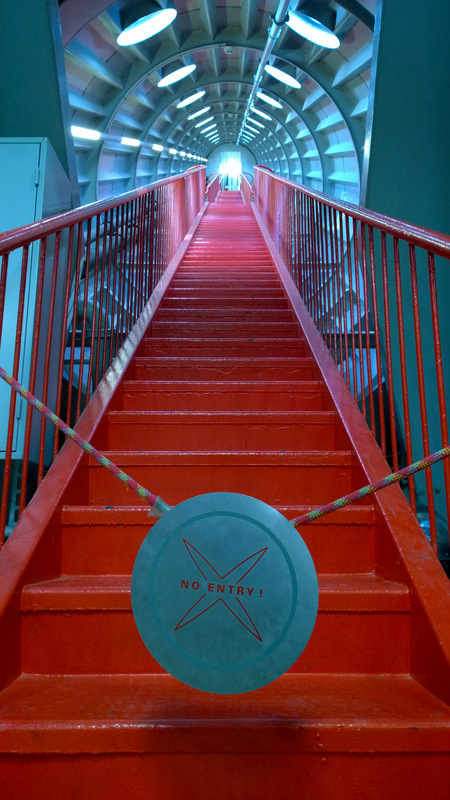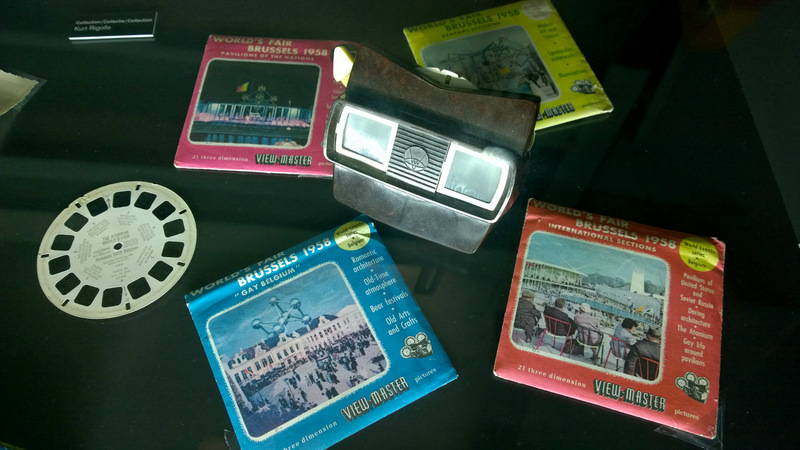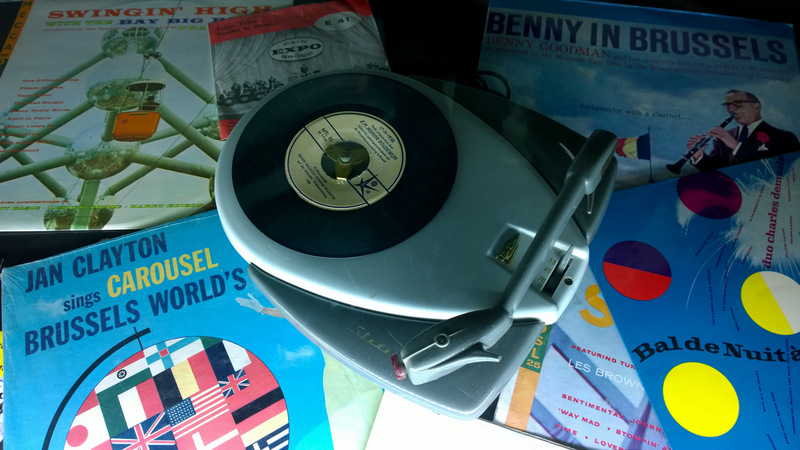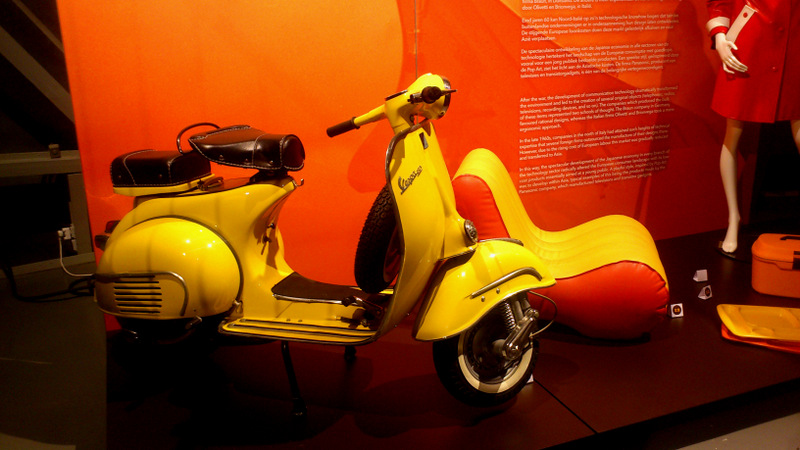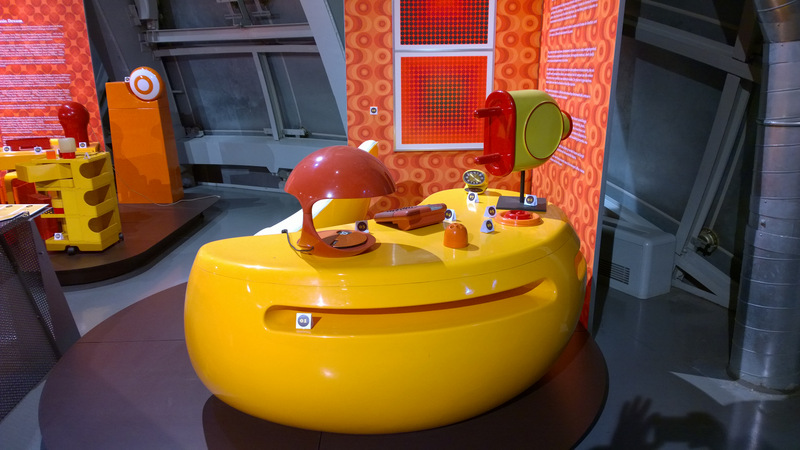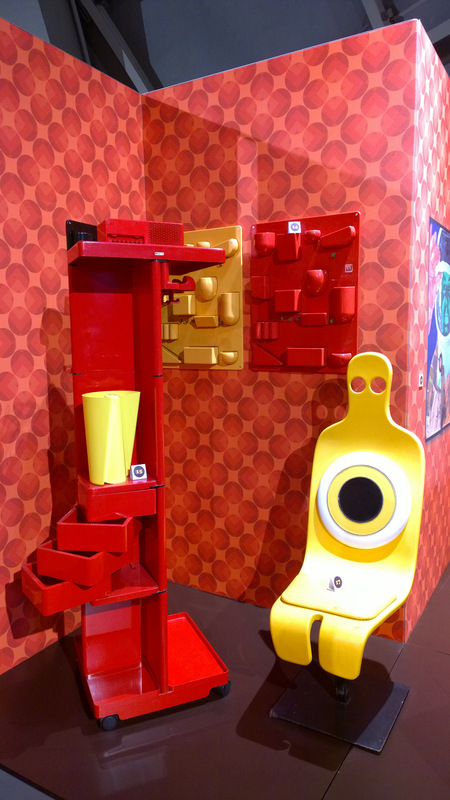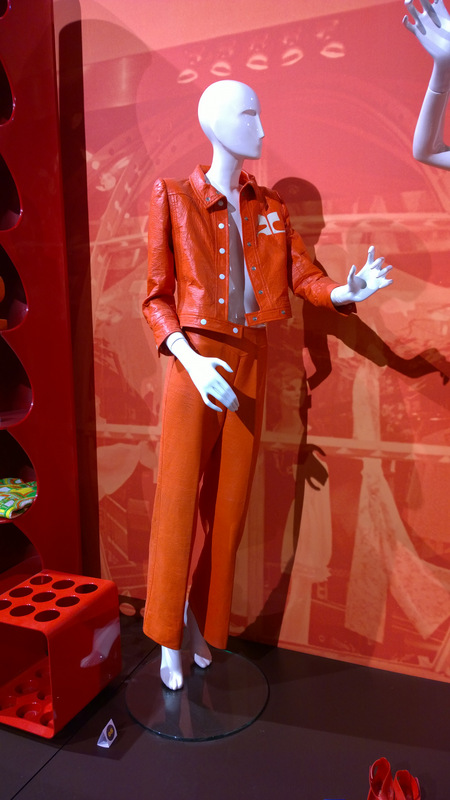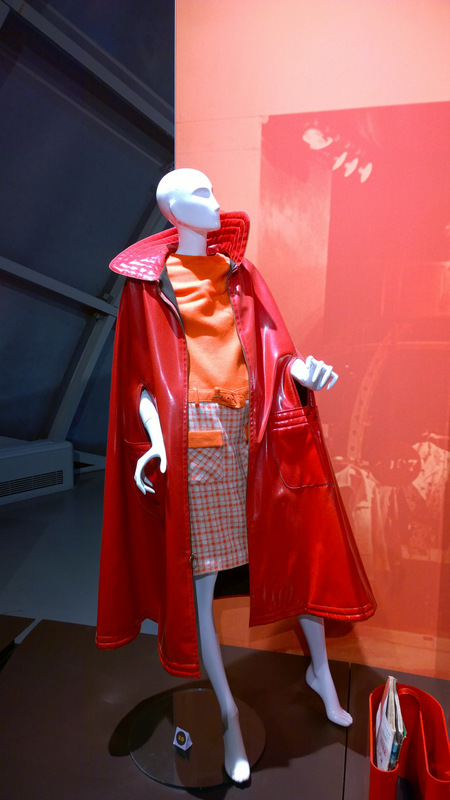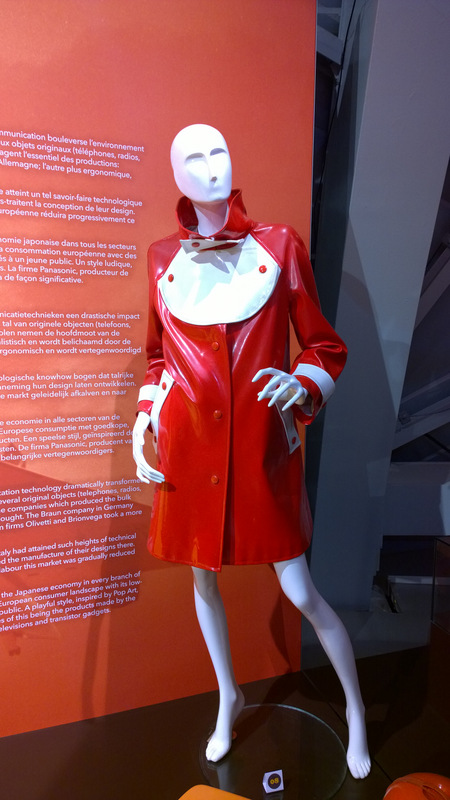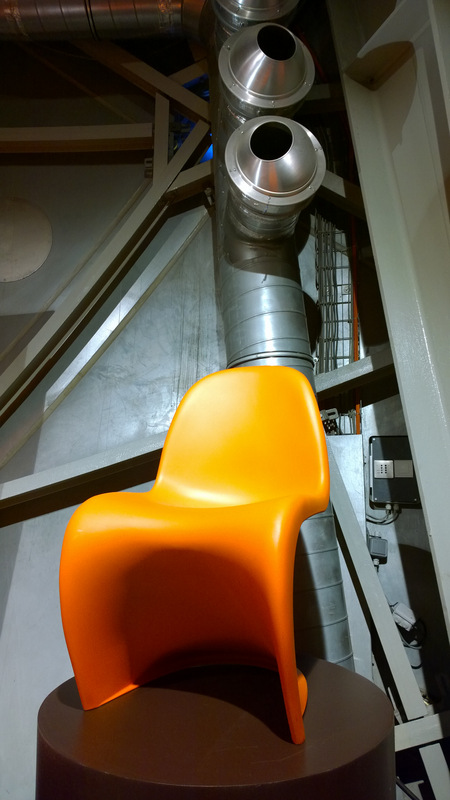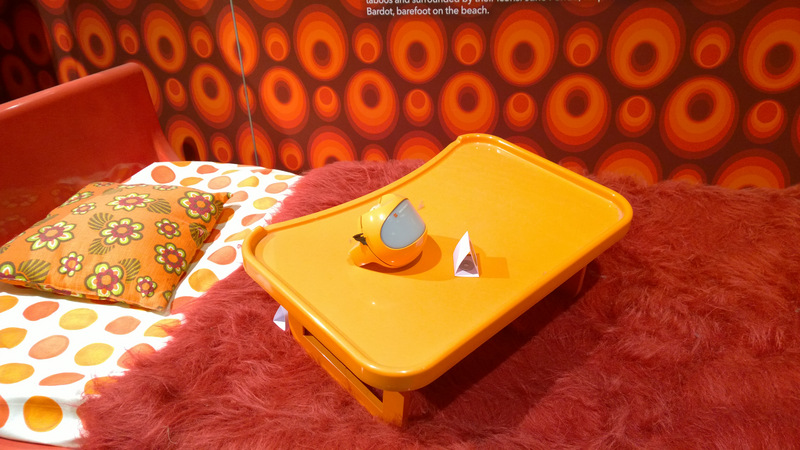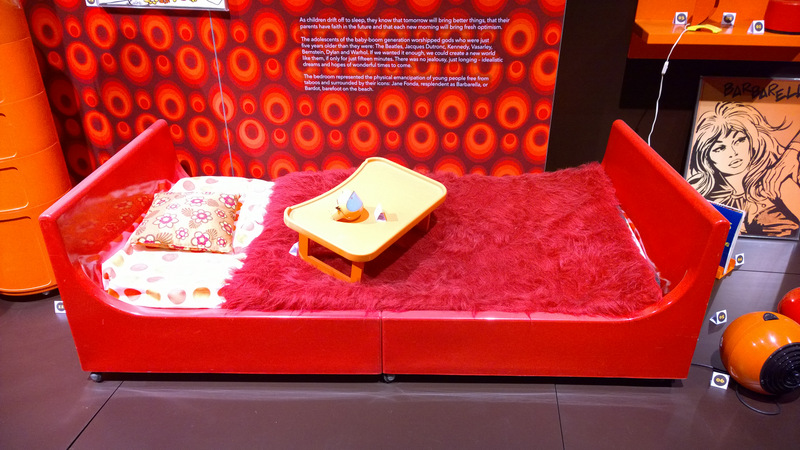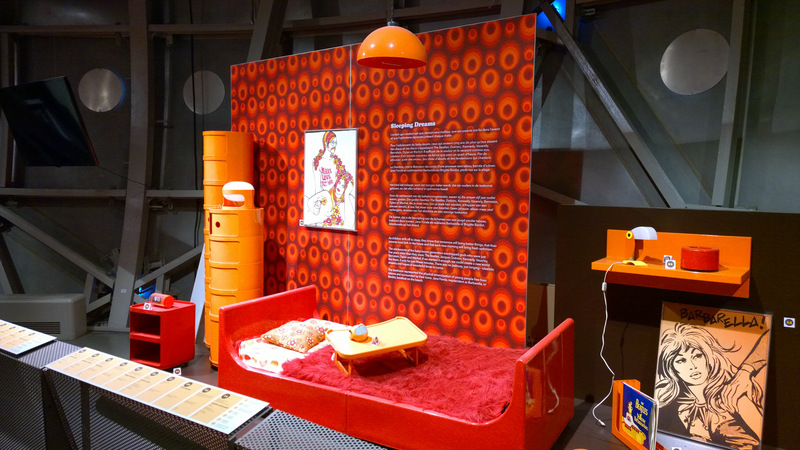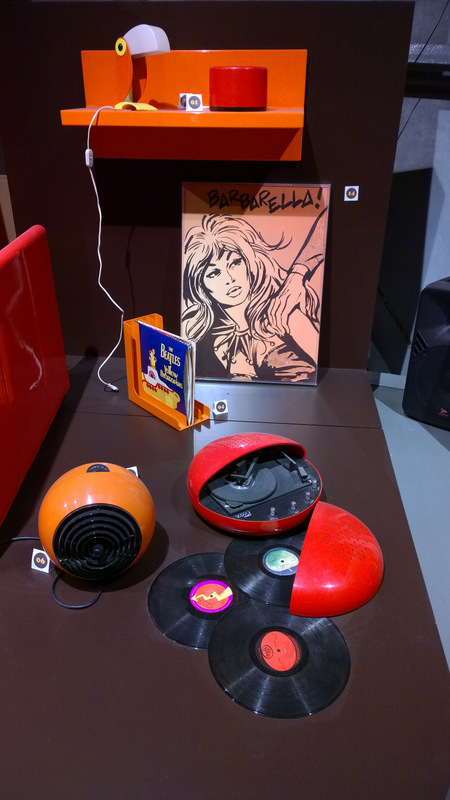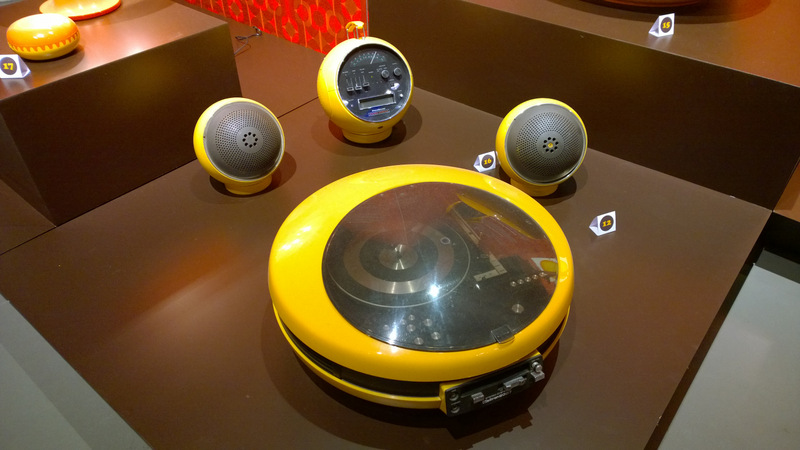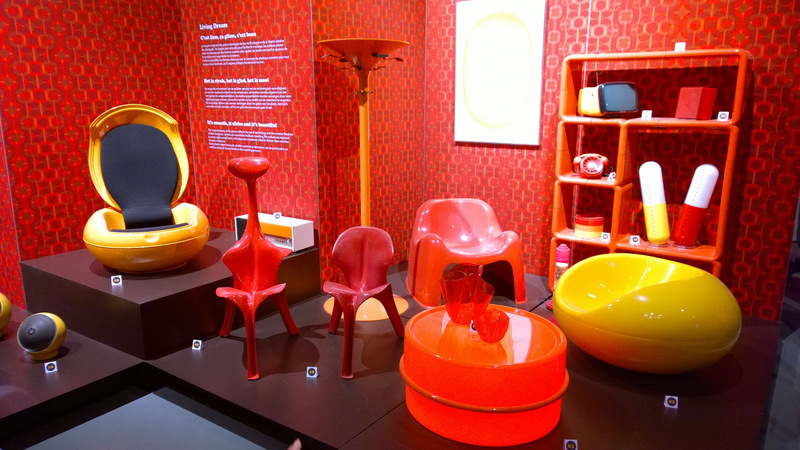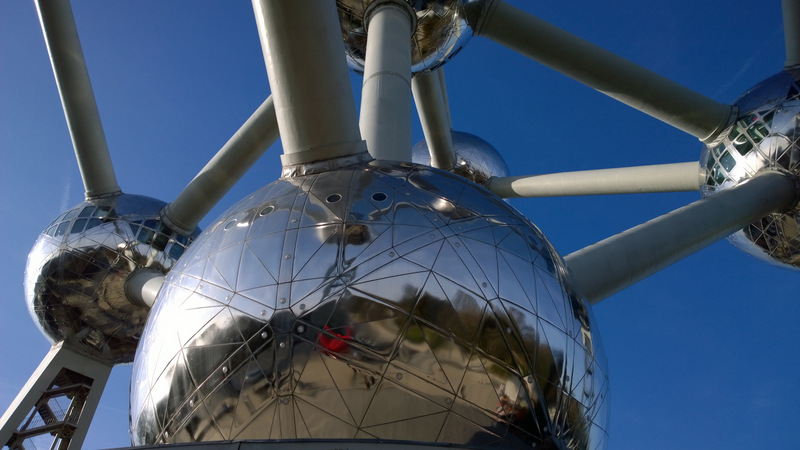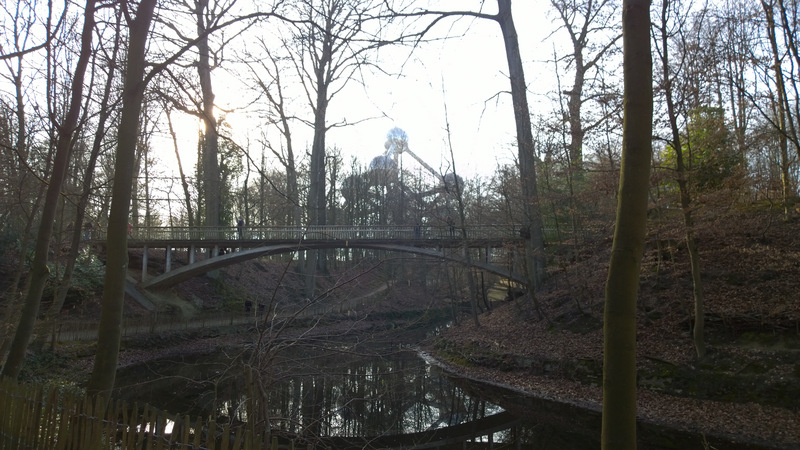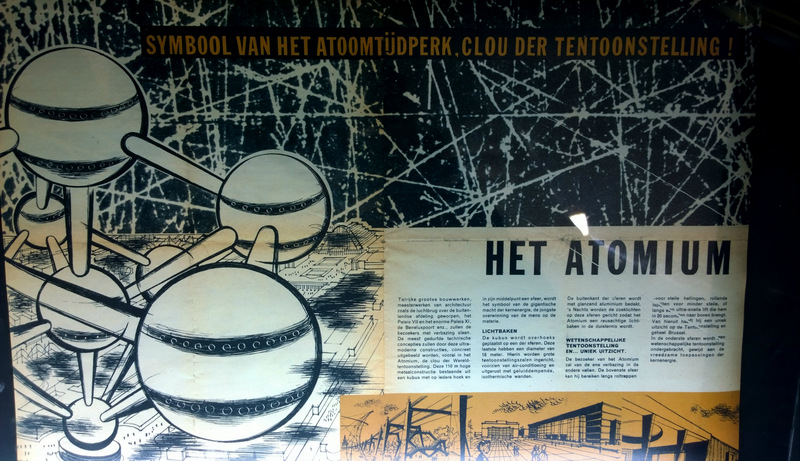
Imagine for a moment you are back in time. The place: Brussels, 1958. The space race between the two Cold War superpowers, the USA and Russia, is well underway but Man has not yet stepped on the Moon. The European Economic Community has just been founded, following signature of the Treaty of Rome in 1957 and Brussels is assuming, albeit timidly, her role as the de facto capital of Europe – a role for keeps over time, since an express agreement confirming or opposing this fact, has never been reached.
At the same time, Brussels is also assuming – with a lot more enthusiasm and fanfare – her role as host to the World Fair of Brussels (1958), affectionately known as Expo 58.
The first major World Fair after the World War II, it is only natural that it would symbolise the world’s will to maintain peace and a collective vision towards a scientifically and technologically advanced future – a better life for all.

Note from the guidebook: ”The hostesses are as much part of the Expo 58 mythology as the Atomium. During the 6 months of the event, almost 300 friendly, multilingual and devoted young ladies welcomed and guided the millions of visitors who flocked to the site. Dressed in red jackets and blue hats, disciplined and flirtatious at the same time, they were the epitome of the modern woman of those times”.
Imagine then, that you turn up at the Heysel plateau and an array of state-of-the-art pavilions and futuristic structures await for you to explore. And amidst all this technology the most imaginative of them all: the Atomium.
A 102-metres high sparkling giant with nine spheres interconnected with tubes, fruit of the collaboration between engineer André Waterkeyn (1917-2005) and architects André and Jean Polak.

The Arrow of the Civil Engineering Pavilion. Another masterpiece that, together with the Atomium, became a landmark. Besides housing an exhibition hall, its purpose was to hold a pedestrian skywalk suspended 5 metres above ground which connected it with the surrounding buildings. The skywalk also provided an elevated view over a relief map of Belgium in miniature. The Arrow remained alongside the Atomium until 1970 when, in urgent need of restoration the authorities decided to demolish it instead and make way for the – seemingly endless – car park that is in use today.
The Atomium was never intended to survive beyond the 1958 World Fair, yet it is still here today as sparkling, futuristic and modern as ever, having undergone extensive renovation between 2004-2006. Brussels’ most popular attraction for tourists, less so for the residents, as is the fate of local landmarks: often ignored unless one gets visitors.
Precisely on such an occasion, it felt good to become ”tourists in our own town” again. And there is always something new going on in the Atomium: from permanent and temporary exhibitions to happenings, to admiring the panoramic view from the top sphere. Or, you can just stand there for a moment and grasp the mind-blowing fact that you are walking inside a giant metallic retro-futuristic bulb that is part of a larger structure that represents an elementary iron crystal enlarged 165 billion times!
A temporary exhibition that ran until May 2015, was showing pieces from the private collection by Philippe Decelle with every day objects and works of art that date from 1960, the year the first entirely plastic piece of furniture was created until 1973, the year of the petroleum crisis.
”Orange Dreams – Plastic Is Fantastic”
or how to turn a plastic nightmare into a beautiful dream.
Although the temporary exhibition is now closed all exhibits, and many more from the Decelle collection, can be viewed in the newly established ADAM (Atomium Art & Design Museum), sitting right next to the Atomium.
Atomium, 08 March 2015
Images by Konstantinos Implikian
